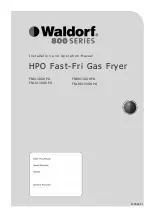
• Ensures optimum efficiency by preventing recirculation of moist air.
• Eliminates condensation on walls and ceilings.
• Reduces the chance of lint being sucked into the dryer.
• Prevents lint and other fine particles being blown into the room.
All external venting systems must be:
• Made from 100mm diameter flexible foil sleeved with a galvanised metal pipe where the vent system goes
through the wall, or 100mm diameter galvanised metal piping.
• Exhausted outside and not into another confined space, eg the roof cavity of a house.
• Fitted with a vent cap outside to stop rain water entering the dryer exhaust system.
• Angled to avoid condensation running back into the dryer.
• The vent system should be a maximum of two metres with no more than three 90° bends.
• Vent systems over two metres long require special installation. Contact a Fisher & Paykel trained and supported
service technician.
Internal venting
The dryer is set up in the factory for front venting. If front venting is used there must be adequate ventilation to
avoid the build up of moisture in the room, which can affect the performance of the dryer. Venting must comply
with local by-laws and regulations.
Installation Instructions
There are two different ways your dryer can be positioned. Freestanding or inverted and mounted on a wall.
Free standing
The dryer stands on the floor and can easily be moved into position.
1. Move the dryer into the desired position. Do not lift the dryer by the top panel.
2. Have a minimum clearance on all sides of at least 20mm.
3. Have a minimum clearance at the rear of 75mm. The spacers from the accessory wall
Installation options
The mounting kit can be used to set this distance. 4 Install the dryer on a stable and level floor.
Updated: Sun, 09 Feb 2020 16:40:35 GMT
Powered by
3






























